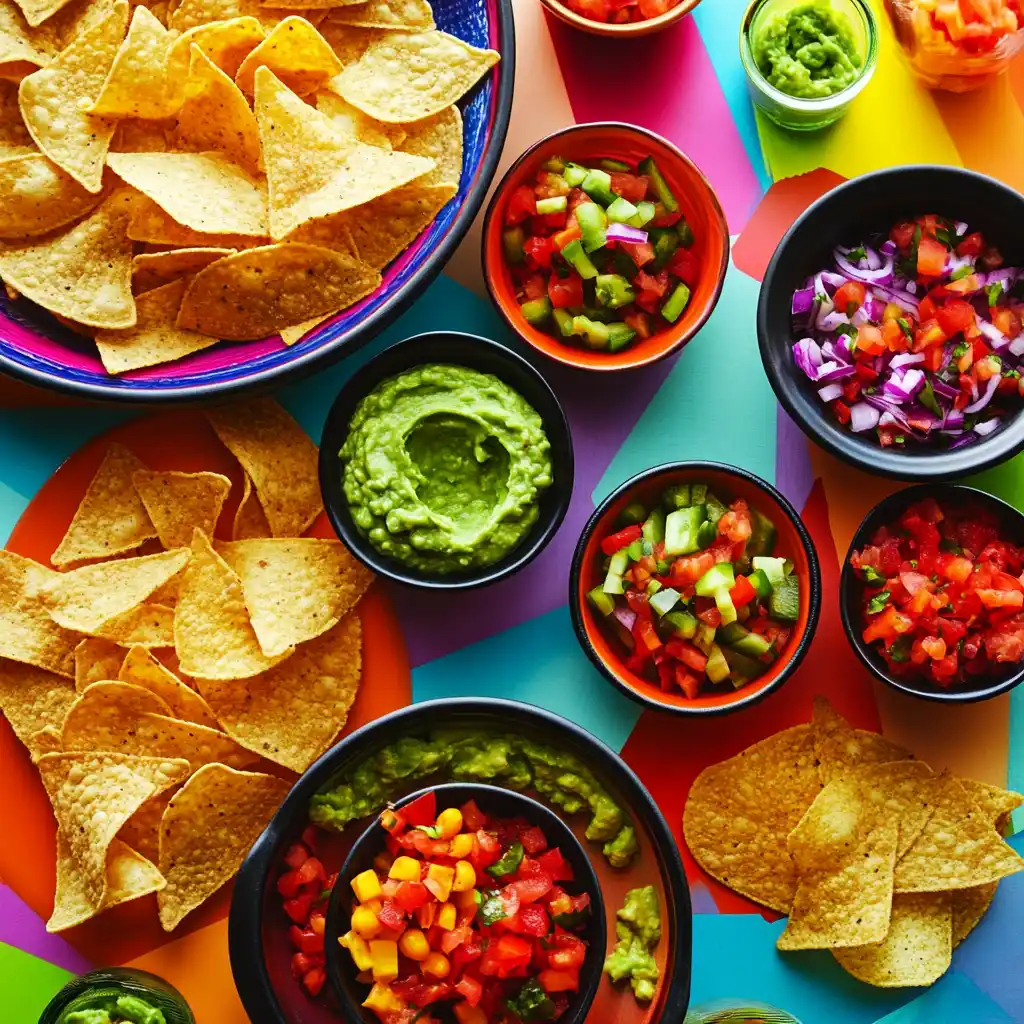Protein chips have gained popularity as a healthier snack alternative, especially among fitness enthusiasts and health-conscious individuals. But are they truly better for you than regular potato or corn chips? This article dives into the nutritional differences, health benefits, and how protein chips can fit into a balanced diet.https://royalesrecipes.com/healthy-protein-chips-best-snack-for-every-diet/
Whether you’re looking to cut back on carbs, increase your protein intake, or simply enjoy guilt-free snacking, understanding the key distinctions between these two options can help you make informed choices.
Protein Chips vs. Regular Chips ” Are Protein Chips Healthier “
Nutritional Comparison ” Are Protein Chips Healthier “
1. Protein Content

Why Protein Content Matters
Protein is a vital macronutrient that plays a significant role in maintaining overall health. It supports muscle growth, repair, and recovery, makes you feel fuller for longer, and boosts metabolism. One of the standout features of protein chips is their high protein content, which sets them apart from regular chips.
1. High Protein Per Serving ” Are Protein Chips Healthier “
- Most protein chips provide 10–20 grams of protein per serving, a substantial amount compared to the less than 2 grams typically found in regular potato or tortilla chips. This difference means protein chips can contribute to meeting your daily protein intake, which is particularly important for:
- Athletes and Fitness Enthusiasts: Protein chips serve as a convenient post-workout snack, delivering amino acids needed for muscle repair.
- Weight Management: High-protein snacks like these help reduce hunger, prevent overeating, and support weight loss efforts.
- On-the-Go Snacking: For busy individuals, protein chips offer a portable and easy way to maintain a protein-rich diet.
2. Source of Protein in Chips
Protein chips derive their protein from various sources, each catering to different dietary preferences and needs:
- Whey Protein: A complete, fast-digesting protein ideal for those focused on fitness goals.
- Pea Protein: A plant-based option suitable for vegans and individuals with dairy allergies.
- Soy Protein: Another complete plant protein that is versatile and widely used in protein chips.
- Egg White Protein: Common in low-carb and keto-friendly protein chips, offering a light and crisp texture.
3. Benefits of High Protein Content
- Satiety: Protein reduces hunger by affecting hormones like ghrelin, making you feel full and satisfied after consuming protein chips.
- Energy Boost: Protein stabilizes blood sugar levels, preventing energy crashes associated with high-carb snacks like regular chips.
- Muscle Maintenance: Protein is essential for preserving lean muscle mass, especially during weight loss or intense physical activity.
4. A Healthier Snack Choice
With their high protein content, protein chips transform snacking into a more functional activity. Instead of empty calories from regular chips, you’re fueling your body with a macronutrient that supports your health and dietary goals. This makes them an excellent alternative for individuals looking to snack smarter without sacrificing taste or crunch.
Incorporating protein chips into your diet allows you to indulge in a satisfying snack while reaping the benefits of protein—something traditional chips can’t deliver.
2. Carbohydrate Levels
How Protein Chips Compare in Carbohydrate Content
Carbohydrates are a primary source of energy, but excessive consumption of refined carbs like those found in regular chips can lead to spikes in blood sugar and contribute to weight gain. Protein chips, on the other hand, are specifically designed to have lower carbohydrate content, making them a healthier snack choice for many diets, especially low-carb or keto lifestyles.
1. Lower Carbs in Protein Chips
- Protein chips generally contain 5–10 grams of carbohydrates per serving, making them a viable option for those who want to reduce their carb intake without sacrificing flavor.
- Many brands prioritize using low-carb ingredients like protein isolates (whey, pea, or soy) instead of starchy bases like potatoes or corn, which are the main culprits behind the high-carb nature of regular chips.
Comparison:
- Protein Chips: 5–10 grams of carbs per serving, with some keto-friendly options offering fewer than 5 grams.
- Regular Chips: Typically 15–25 grams of carbs per serving, with most derived from refined starches.https://www.eatthis.com/high-protein-chips/
2. The Problem with High-Carb Snacks
Regular chips, made primarily from potatoes, corn, or flour, are packed with simple carbs that break down quickly into glucose. This rapid digestion can lead to:
- Blood Sugar Spikes: High-carb snacks cause quick energy surges followed by crashes, leaving you feeling tired and craving more snacks.
- Weight Gain: Excessive carbs, when not burned for energy, are stored as fat, making high-carb snacks a poor choice for weight management.
- Lack of Satiety: Simple carbs lack the staying power of protein and fiber, which means you’re likely to overeat regular chips without feeling satisfied.
3. Benefits of Low-Carb Protein Chips
Protein chips’ reduced carb content offers several advantages:
- Blood Sugar Stability: Lower carbs mean a slower release of glucose, preventing the energy highs and lows typical of regular chips.
- Better for Keto Diets: With fewer than 5 grams of net carbs in many options, protein chips align well with the macronutrient requirements of ketogenic and low-carb diets.
- Fewer Empty Calories: Protein chips focus on delivering functional nutrition (protein and fiber) instead of empty calories from carbs, making them a more nourishing choice.
4. The Role of Fiber in Carbs
Many protein chips also contain a significant amount of fiber, which is counted in the total carbohydrate content but functions differently in the body:
- Fiber Slows Digestion: This reduces the impact of carbs on blood sugar levels, creating a more gradual energy release.
- Improved Satiety: Fiber adds bulk to snacks, making protein chips more filling than regular chips.
- Gut Health Benefits: Dietary fiber supports healthy digestion and promotes a balanced gut microbiome.
Example: A serving of protein chips may have 10 grams of carbs, but 3–5 grams are fiber, resulting in net carbs as low as 5 grams.
5. Who Benefits Most from Low-Carb Protein Chips?
- Individuals on Low-Carb Diets: Protein chips provide a guilt-free snack option for keto, Atkins, and other low-carb plans.
- Diabetics: With their minimal impact on blood sugar levels, protein chips are a safer snack option for those managing diabetes.
- Weight Watchers: Fewer carbs mean fewer unnecessary calories, making it easier to stay within calorie limits.
A Smarter Carb Choice
By reducing carb content and prioritizing functional ingredients like protein and fiber, protein chips offer a healthier alternative to traditional snacks. They satisfy your crunch cravings without the adverse effects of high-carb, high-calorie regular chips, making them a smart addition to a balanced diet.
3. Fat Content
- Protein Chips:
- Most protein chips are baked, resulting in a fat content of 5–7 grams per serving, often from healthier oils.
- Regular Chips:
- Regular chips, especially fried ones, contain 10–15 grams of fat per serving, with unhealthy saturated or trans fats being common.
4. Calorie Count
- Protein Chips:
- Calories per serving range between 100–150, depending on the brand.
- Regular Chips:
- Typically contain 150–200 calories per serving, often providing “empty” calories with little nutritional value.
5. Additives and Ingredients
- Protein Chips:
- Many brands focus on clean-label ingredients, avoiding artificial flavors, preservatives, or additives.
- Regular Chips:
- Often contain artificial flavors, colorings, and preservatives that may contribute to long-term health issues.
Health Benefits of Protein Chips
Why Choose Protein Chips Over Regular Chips?
Hunger Control and Satiety
Protein chips, thanks to their high protein and fiber content, keep you feeling full longer, helping to curb cravings and prevent overeating. Regular chips, with their high-carb composition, often lead to short-lived satiety.
2. Weight Management
Protein chips are lower in calories and higher in protein, making them a great choice for those managing their weight. They offer the crunch and flavor of traditional snacks without the guilt.
3. Muscle Recovery and Fitness Goals
Protein is essential for muscle repair and growth. For athletes and active individuals, protein chips provide a convenient post-workout snack.
4. Reduced Blood Sugar Spikes
With lower carb content, protein chips help maintain stable blood sugar levels, making them suitable for individuals with diabetes or those seeking to reduce sugar intake.
5. Better Ingredients
Brands often prioritize healthier fats (like avocado or olive oil) and avoid artificial additives, offering a cleaner, more wholesome snack option.
Situations Where Regular Chips May Still Fit
When Regular Chips Might Be the Better Choice
While protein chips offer numerous health benefits, regular chips may still be appropriate in certain situations:
- Taste Preference: Some people simply prefer the classic taste and texture of traditional potato chips.
- Availability: Protein chips may be harder to find in some areas or more expensive.
- Occasional Indulgence: Eating regular chips in moderation as part of a balanced diet can still align with healthy eating goals.
How to Choose the Right Protein Chips
Tips for Picking Healthy Protein Chips
How to Choose the Right Protein Chips
Selecting the perfect protein chips can seem overwhelming with the variety of options available. However, focusing on specific criteria will help you find a snack that suits your dietary needs, taste preferences, and health goals. Here’s a comprehensive guide to help you choose the best protein chips.
1. Protein Content
Why It Matters:
Protein is the defining feature of these chips, so it’s essential to check the amount per serving. Look for options with at least 10 grams of protein, as these provide the satiety and muscle-repair benefits that set protein chips apart from regular snacks.
Tips:
- If you’re an athlete or on a high-protein diet, opt for chips with 15–20 grams of protein per serving.
- For lighter snacking, 10–12 grams of protein per serving is sufficient to curb hunger.
2. Ingredients to Prioritize
High-Quality Protein Sources:
Protein chips derive their protein from various sources, and the type of protein used can impact digestibility and suitability for different diets. Common sources include:
- Whey Protein: Ideal for fitness enthusiasts due to its complete amino acid profile.
- Pea or Soy Protein: Excellent for vegans and those avoiding dairy.
- Egg White Protein: Perfect for keto or low-carb diets.
Clean Label Ingredients:
Choose chips made with natural ingredients and avoid brands that list artificial additives, preservatives, or excessive flavoring agents. Look for labels that mention:
- Non-GMO ingredients
- No artificial colors or flavors
- No hydrogenated oils or trans fats
3. Carbohydrate and Fat Levels
Low-Carb Content:
If you’re on a low-carb diet, look for chips with 5 grams or fewer of net carbs per serving. This makes them suitable for keto and similar eating plans.
Healthy Fats:
Protein chips often use better fat sources like olive oil or avocado oil. Avoid options with trans fats or excessive saturated fats, which are common in regular chips.
4. Sodium Content
While protein chips are generally healthier than regular chips, some options can be high in sodium.
- Optimal Sodium Levels: Aim for chips with 200 milligrams or less of sodium per serving, especially if you’re monitoring your salt intake.
- For flavored options like BBQ or Ranch, check labels closely, as these tend to have higher sodium levels.
5. Dietary Compatibility
Protein chips cater to various dietary preferences, so ensure the chips you select align with your needs:
- Keto-Friendly: Low-carb, high-fat chips with minimal net carbs.
- Vegan: Made with plant-based protein sources like pea or soy.
- Gluten-Free: Certified gluten-free chips for those with gluten sensitivities or celiac disease.
- Low-Calorie: Options with 100–150 calories per serving to keep snacking guilt-free.
6. Flavor and Texture

Protein chips come in a wide range of flavors to satisfy every craving:
- Classic Savory Flavors: BBQ, Sour Cream & Onion, Ranch.
- Spicy Options: Jalapeño Cheddar, Spicy Chili Lime.
- Exotic Blends: Wasabi Ginger, Mediterranean Herb.
Tips for Picking Flavors:
- Start with familiar flavors like BBQ or Nacho Cheese if you’re new to protein chips.
- Experiment with variety packs to explore unique and gourmet flavors without committing to a single type.
7. Nutrition Label Breakdown

Take a moment to analyze the nutrition label for key metrics:
- Protein: Aim for 10–20 grams per serving.
- Carbs: Fewer than 10 grams (or less than 5 grams for keto-friendly options).
- Fat: Prefer options with 5–7 grams of fat from healthy sources.
- Fiber: Look for 3–5 grams per serving to promote satiety and digestion.
- Added Sugars: Keep added sugars to 2 grams or less per serving.
8. Price and Availability
Protein chips tend to be more expensive than regular chips due to their premium ingredients. Balance cost with quality by:
- Buying in Bulk: Many online retailers and health stores offer discounts for larger quantities.
- Checking Local Stores: Major brands like Quest or PopCorners Flex are widely available in grocery chains.
- Exploring Online Options: Specialty brands with unique flavors or dietary options can often be found online.
9. Eco-Friendly Choices
If sustainability is important to you, consider brands that prioritize eco-friendly packaging and use sustainable protein sources like pea protein.
10. Reviews and Recommendations
Before committing to a new brand or flavor, check customer reviews to gauge satisfaction with taste, texture, and quality. Trusted recommendations from health and fitness communities can also point you toward the best options.
Choosing the right protein chips doesn’t have to be complicated. By focusing on protein content, clean ingredients, low carbs, and compatibility with your diet, you can find a snack that satisfies your cravings and supports your health goals. Whether you’re new to protein chips or a seasoned fan, this guide ensures you make a smart, nutritious choice every time.
Frequently Asked Questions About Protein Chips
1. Are protein chips gluten-free?
Most protein chips are gluten-free, but always check the label to confirm, especially if you have celiac disease or gluten intolerance.
2. Can I eat protein chips daily?
Yes, but moderation is key. While healthier than regular chips, consuming any processed snack in excess isn’t ideal.
3. Are protein chips suitable for kids?
Protein chips can be a healthier option for children, especially when made with clean ingredients. Ensure the flavor and texture are kid-friendly.
4. Can I make protein chips at home?
Absolutely! Homemade protein chips allow you to control the ingredients and customize flavors, making them even healthier.
Conclusion
When comparing protein chips to regular chips, the former emerges as the healthier option due to its higher protein content, lower carbs, and better fat profile. They are a smart choice for those seeking a snack that supports weight management, muscle recovery, and overall health goals.
That said, occasional indulgence in regular chips is fine as part of a balanced diet. For the health-conscious, however, protein chips are a versatile and satisfying snack that doesn’t compromise on flavor or nutrition.
If you’re looking for guilt-free crunch and nutrition in every bite, protein chips are the way to go!

